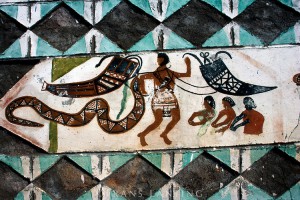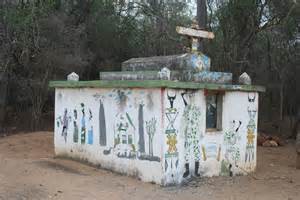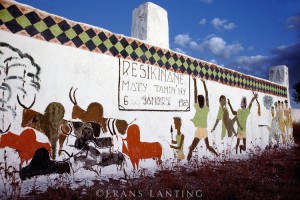No matter where you are within the large island of Madagascar, it is not uncommon to see burial tombs scattered throughout the divine, beautiful landscape of this remarkable island. Caring for dead ancestors is a big deal within the culture of the malagasy people that call madagascar their homeland. It is within the tradition of Famadihana in which a great deal of respect is given to the dead through the changing of ancesteral shrouds every seven years out of respect and a way of helping their ancestors transition into the afterlife. Since so much care is put into these ceremonial traditions and burial tombs. Family members are often seen spending whatever expense on their deceased loved ones on sacred burial tombs and plots of land all out of respect and love for their ancestors. Since madagascar is a undeveloped and poverty stricken country for the most part most family have been known to spend more money on burial tombs than on their own house.

Most burial tombs are seen painted and decorated with images of animals, gods and goddesses. When researching about what this topic I stumbled a research article that outlined how different cultures within the Malagasy people decorate and select a proper burial tomb for the deceased.
Different cultures and the burial structure that they believe is proper for the deceased:
- Merina people- believe the tomb should be partially underground with shelves so that the silk wrapped body is off the ground and that the structure consists of solid stone.
- Mahafaly people (Upper class) – believe the tomb should be brightly painted and that no expense should be spared for the deceased as they think the tomb should be constructed using concrete and painted glass windows. Often painting on the burial tomb include pictures of airplanes, taxicabs and many other remarkable drawings.
- Sakalava people– believe the tomb should be decorated with carvings of explicit sexual drawings. Which are mean to depict fertility or life giving force to their ancestors.


